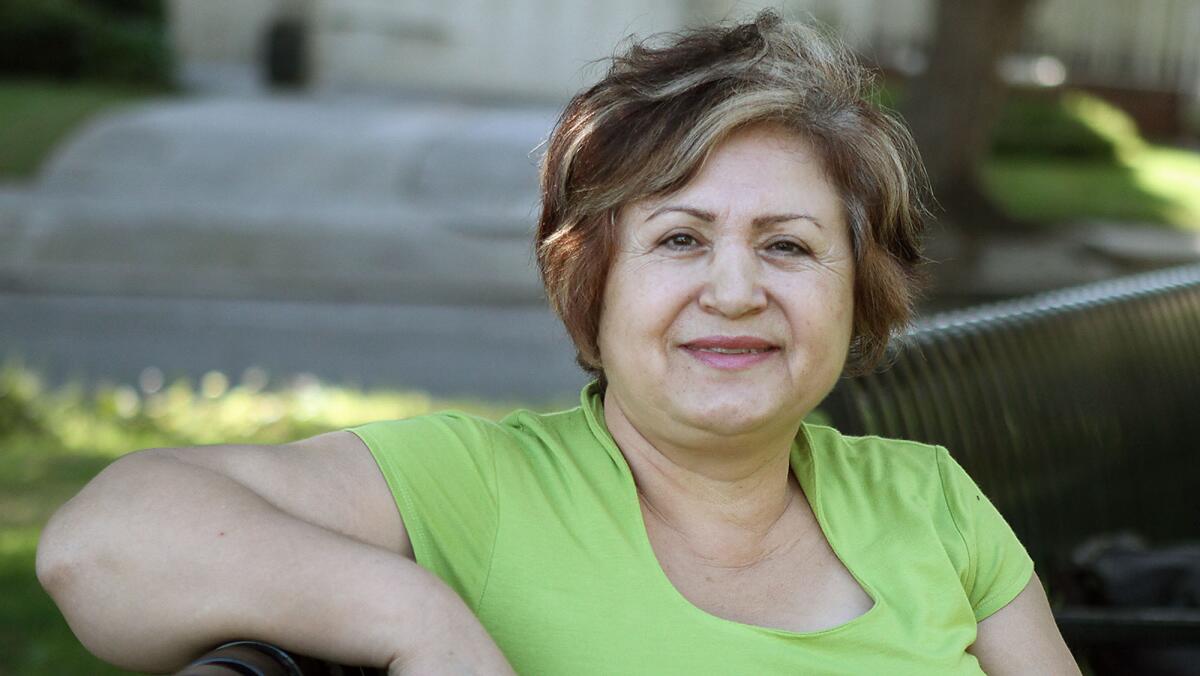Change in green card cap drives citizenship

For Nazik Parazyan, taking the test to become a citizen in 2010 was a breeze because she had already lived in Glendale for 11 years.
It takes about five years to apply for citizenship after getting a green card, but Parazyan couldn’t get one. She came to the United States seeking asylum, like many others immigrating to Glendale from Armenia in the 1990s. Although her status as someone fleeing from fear of persecution was approved within four months, it would be nearly a decade before her green-card application was approved.
Once Congress lifted an annual cap of 10,000 for green cards for asylum seekers in 2005, Parazyan got her green card and in 2010, her citizenship.
Parazyan’s story isn’t unique.
“It’s made a big difference because of the elimination of the cap,” said Artem M. Sarian, an immigration attorney based in Glendale, adding that some waited up to 17 years for a green card before 2005. “A floodgate opened and everyone became a permanent resident.”
Sarian points to the Congressional action as one reason the number of naturalized citizens has increased in Glendale over the past five years.
In 2009, the number of naturalized citizens was 58% of the total foreign-born population. That number jumped to 67% in 2012, according to 2012 Census Bureau data.
In 2012, 110,002 of the 194,501 people living in Glendale were foreign-born, according to 2012 census data. Most of them likely are Armenians coming from a variety of countries, according to an analysis of demographic data.
Natural tendencies for citizenship rates to rise as immigration rates subside and pro-citizenship advocacy from Armenian community groups looking to boost voter registration could have also played a role in the trend.
The two biggest waves of Armenian immigrants into Glendale were in the 1980s and 1990s, said Levon Marashlian, a Glendale Community College history professor. Armenian immigration tended to coincide with war or political controversy in Middle Eastern countries, as well as with the the fall of the Soviet Union. Armenians came from different countries, highlighting the diasporic nature of a nation splintered by genocide in 1915.
After the big waves, Armenians still moved here, but on a smaller scale. After 2003, as the Iraq War took hold and its impact continued for years, Armenians would flee the rattled nation. Armenians from Iran have also been coming over the past three years, but in smaller numbers than four decades ago, said Tomik Alexanian of the Armenian Society of Los Angeles, which is based in Glendale.
Ali Modarres, an expert on immigration in Los Angeles County, said about eight years after immigration waves lessen, it’s natural for citizenship rates to grow, as the citizenship process takes time. He added as an immigrant group becomes more politically active, citizenship also rises.
“With all of that coalescing, it’s sort of a perfect storm,” Modarres said.
At the turn of the century, Armenian groups stepped up advocacy efforts to convince people to become citizens and register to vote by hosting informational meetings and speaking on Armenian TV programs. This push was partially influenced by former City Councilman Larry Zarian, the first Armenian to sit at Glendale’s dais, community leaders said.
Meanwhile, the number of Armenian American candidates running for political office in Glendale has jumped and many have appeared on Armenian TV stations to encourage people to register to vote.
“That kind of opened people’s minds to realize that the best way of getting involved is by having your voice; and the only way of having your voice is by voting; and the only way of voting is becoming a citizen,” said Chahe Keuroghelian, a frequent City Council candidate.
Ana Moses, an immigration consultant at Affordable Advocates, which has helped more than 1,500 clients with citizenship services in the past four years, said other procedural changes within the immigration system could also have impacted naturalization rates.
As the federal budget for monetary benefits for immigrants decreased, the desire to become a citizen among Moses’ clients increased because people wanted to apply for Social Security and food stamps. Also, in 2007, a fee waiver program took hold, canceling out the $680 citizenship application fee. The majority of her clients get a fee waiver, Moses said.
Although most of her clients are Armenian, Moses expects she will see more Latinos in the future if immigration reform that includes amnesty ever passes Congress.
According to census data, there are roughly 7,800 immigrants from Latin America living in Glendale who are not citizens.
--
Follow Brittany Levine on Google+ and on Twitter: @brittanylevine.
ALSO:
Instructor accused of sexual assault gets support from students
Restaurant, water store broken into